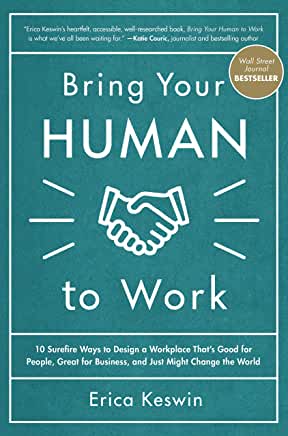By William Carmichael
Whether we like it or not, an unparalleled shift in how we define our relationships at work is upon us. I do not say this lightly either. It simply is. In this age of unlimited technology and the unprecedented use of social connections available to us at work, a reassessment of how we work is emerging. A new paradigm, if you will. Think about it this way. How we interact with one another at the office is different now from, say, ten years ago, or even five for that matter. Workspace design, workplace behaviors, how we conduct face-to-face interactions as well as communicate with one another, all have changed workplace culture. Standard meeting protocol now seems to require the use of iPhones all around. Whatever happened to just listening and taking notes? And in another example, the number of people working remotely is leaving companies struggling with whether or not to even have a central office. Organizations of all sizes are being forced to redefine their culture in terms of human collaboration. And what is the real-life balance in a world where the virtual and the real are blurred? Erica Keswin tackles these aspects in her new book, Bring Your Human to Work: 10 Sure Fire ways to Design a Workplace That’s Good for People, Great for Business, and Just Might Change the World.
What is Bring Your Human to Work About?
According to the author, the phrase “bring your human to work” means bringing humanity to work and enriching a workplace culture “where people can feel like they are plugged into something bigger than themselves — that’s a human culture. That’s the kind of place that businesses need to create if they want to succeed in this purpose-driven marketplace and the race for young, very-much-in-demand talent.” Bring Your Human to Work covers the behaviors that managers should encourage to create a good work space; one that is inviting and genuine.
It is worth noting that an inclusive work environment is crucial for creating community and critical in maintaining that community feeling even when people are speaking through a computer or smartphone to get stuff done. Given the rising percentage of remote work and debates about the merits of open space work places, Keswin’s choice to focus on human interaction is instantly savvy and timely.
The Need for a Human Workplace Culture!
Let’s face it, the culture of an organization is important and regardless of how measured, remains one of the most critical factors that determine how an organization can survive. In Bring Your Human to Work, Keswin identifies and explains ten ways to establish and then strengthen a rich, human culture. The specific initiatives are best revealed within the narrative, in context, but they are directly relevant to all organizations, whatever their size and nature. Well-written and immediately applicable, Keswin distills the key building blocks of the most human companies into relevant advice that any business leader can use to build a “human workplace.” These building blocks include:
- Understanding your company’s role in the world, beyond financial profit.
- Encouraging employees to be healthy in body and spirit.
- Running your meetings with clear purpose.
- Making space for face-to-face interaction.
- Building professional development into company culture.
- Inspiring your workforce to give back to the community.
- Simply saying “thank you”.
The book focuses in particular on what constitutes a successful life balance; creating relationships with others and ourselves. For example, when Keswin writes about developing work behaviors, she notes how holistic the strategy must be to be successful and I especially like the way she puts it – “To stay ahead of the curve — to play the long game — we must craft vital, intentional work practices that account for the complexity of people’s real lives. This crafting must consider all the people our business impacts, which means all stakeholders, including our employees, our customers, and our partners. The long game is broad and inclusive, spanning our macro, and micro spheres of influence.”
Keswin asserts, and I agree, that “people crave work-life balance, sustainable work practices, and authentic, purpose-driven work cultures. Bringing our human to work will help us manage our technology and ourselves, too.”
Structure and Layout
I found this book to be extremely user-friendly. By that, adaptable and relatable regardless of industry yet thoroughly researched. At ten short chapters, readers will find Bring Your Human to Work easily read over a weekend. Though each chapter stands on its own I highly recommend reading it straight through.
As a teaser, allow me to provide a quick synopsis of just two I found refreshing. Chapter One- Be Real: Speak in a Human Voice, where Keswin tackles the importance of finding your company’s real voice and appreciating the value of values. And Chapter Seven- Disconnect to Reconnect: Where There’s a Will, There’s a Way, where she describes the absolute need for each one of us to take a mental break from “the constant stimulation of productivity” we face in our work lives.
What readers will also appreciate are the takeaways or ‘Human Action Plans’ that end each chapter as well as the Keswin’s effective use of ‘Spotlights’; real people, places, and things that bring her suggestions to life. It is obvious that this author has truly seen it all and wants us to experience it. If you can’t tell, I liked this one and I think you will too!
Who Will Benefit Most from This Book?
Organizational management, Senior management, Human Resource and Training professionals
About the author:
Erica Keswin is a workplace strategist, business coach, and the founder of the Spaghetti Project, a platform devoted to sharing the science and stories of relationships at work. She contributes regularly to Forbes, the Harvard Business Review, Entrepreneur, and Quartz at Work.

